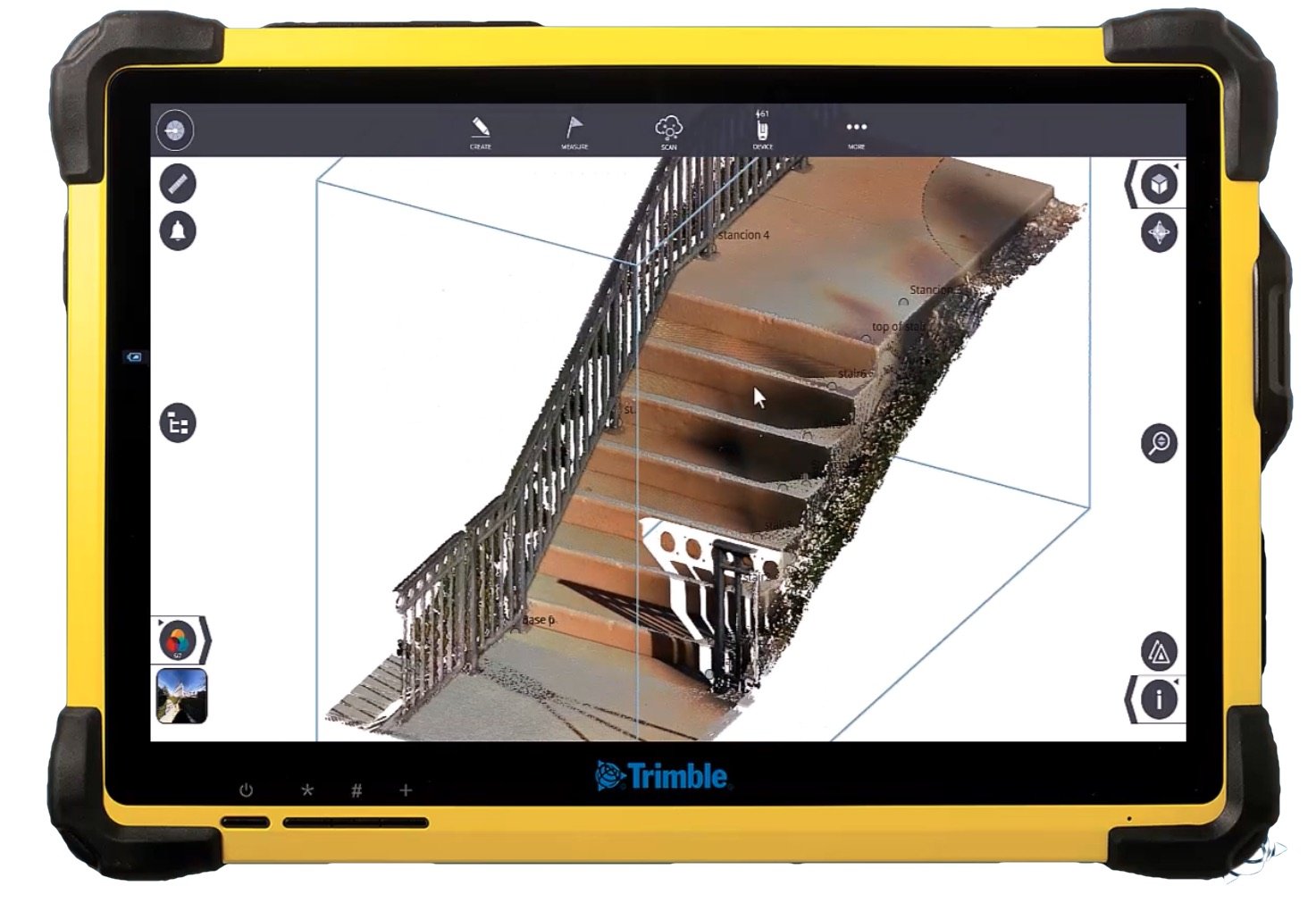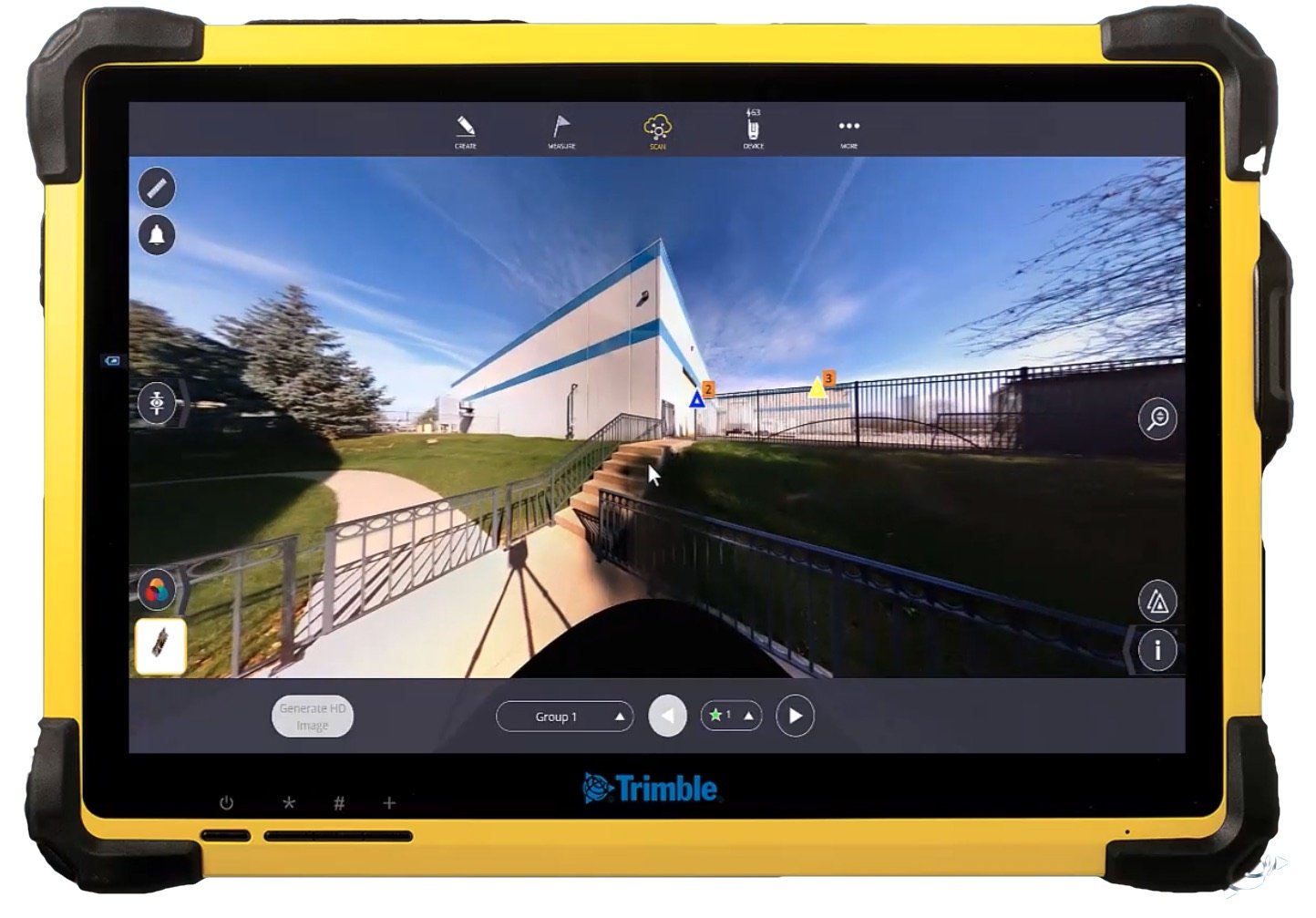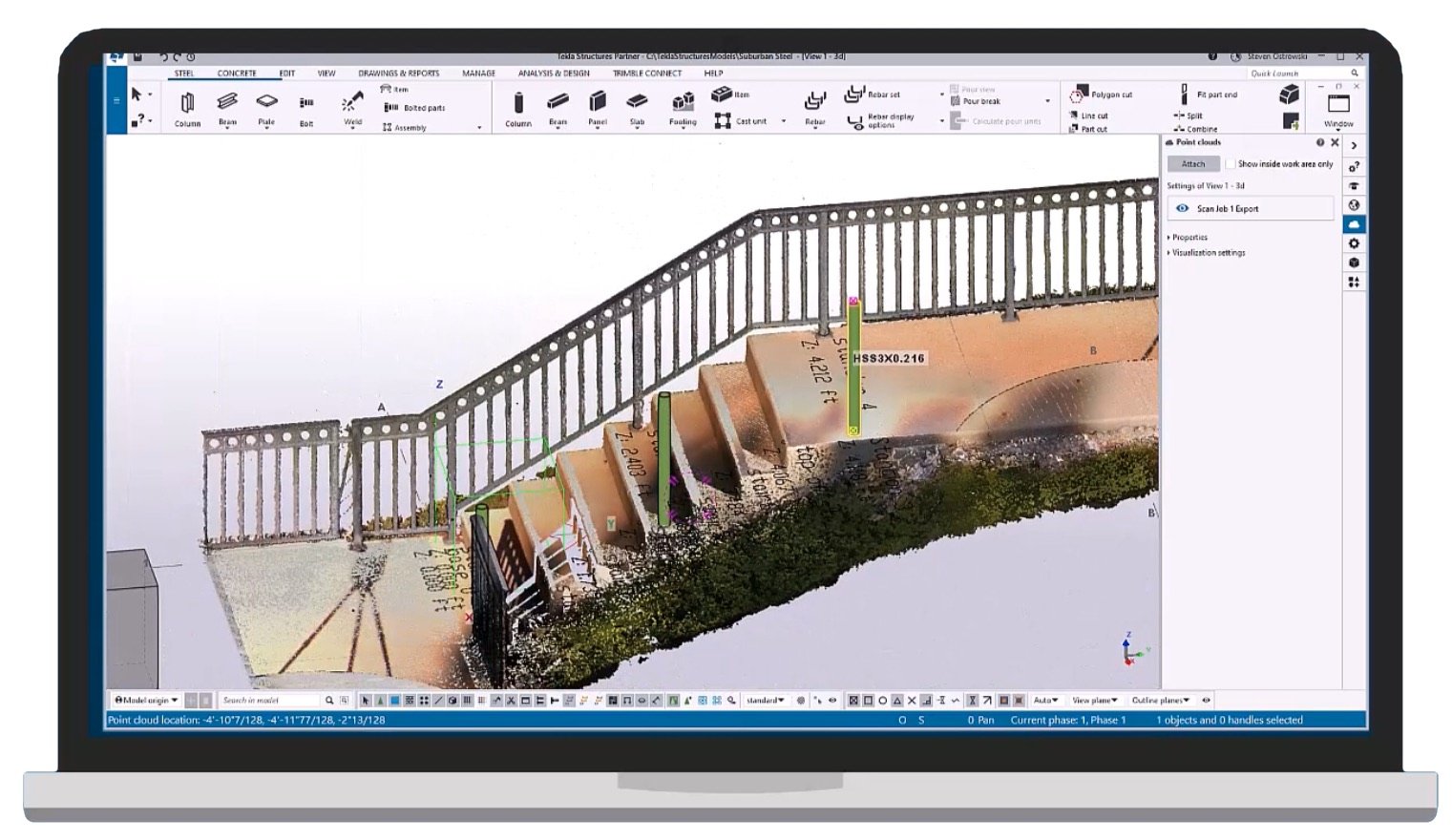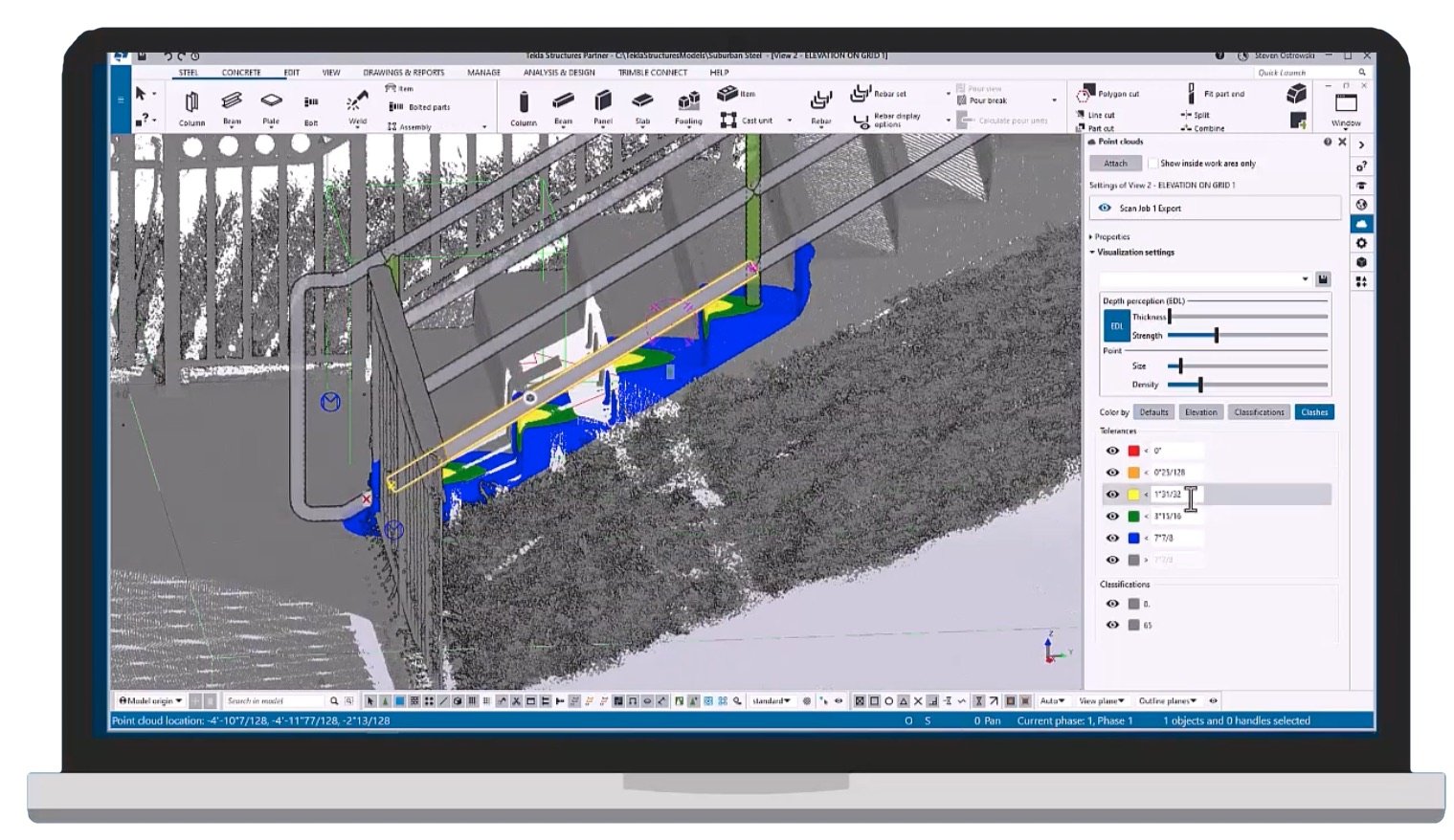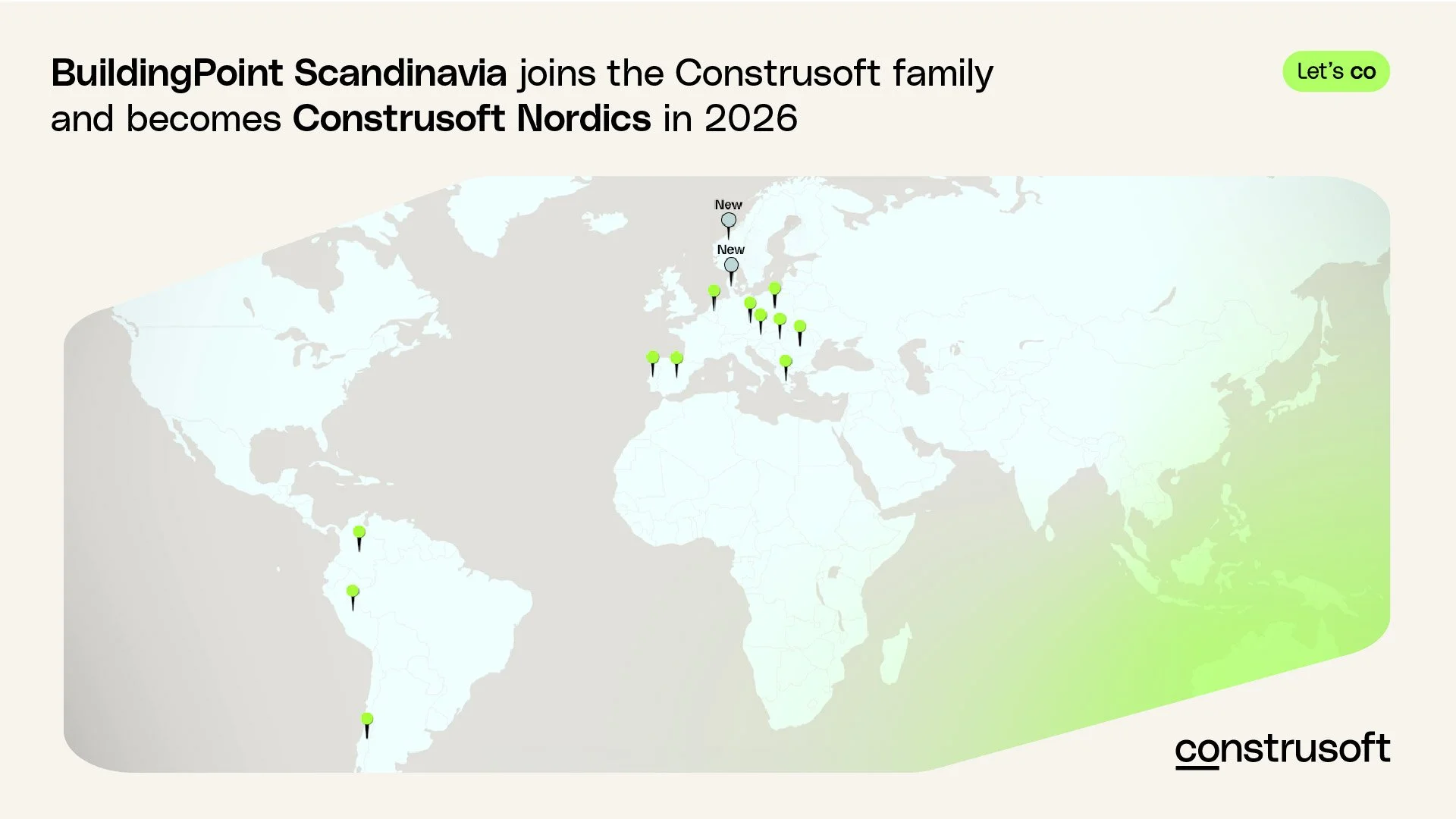Efficient workflow with Trimble FieldLink, a Trimble scanner and Tekla: Scan to Fabrication in 20 minutes
VIDEO: How to collect scans, take measurements, and export both to Tekla to create a fabrication ready handrail model within 20 minutes!
Working smarter with scanning and BIM!
In this video, Steve from Trimble showcases an efficient workflow for collection of scan data, on-site measurements and point cloud preparation before exporting the data to Tekla for the design of a handrail – all within a 20-minute timeframe!
Benefits:
Reduced travel
Avoid clashes and rework
Smoother design process because of a full overview of site conditions
The primary focus in the video is not on the details of designing a handrail in Tekla but rather how to capture, prepare and use the scan in Tekla to avoid clashes, reduce travel and provide a design process that considers the details of the exisiting environment the handrail will be installed in.
While it may not be a complex design and fabrication task, it serves as a practical illustration of how scanning and on-site point cloud operations can significantly enhance the efficiency of the design process!
Step 1: Scan and prepare the point cloud
The initial step involves collecting scan data and conducting measurements, accompanied by clever tips to simplify the process. In the video Steve guides viewers through aligning scan data, taking field measurements, and structuring the exported data. Everything is done on-site with Trimble FieldLink on a tablet
This helps achieve a streamlined Tekla design process. Steve also demonstrates the importance of adding base points and elevation to ease the design work.
Step 2: Using the point cloud
The subsequent phase covers the import of data into Tekla, involving the creation of points, elevations, and the design of stanchions and handrails. The emphasis is not on an advanced use of Tekla but rather on highlighting the benefits of utilizing scan data.
The video underscores how small preparations done in Trimble FieldLink on the tablet on-site ease the workflow for Tekla users.
The benefits
The overarching goal of this workflow is to enhance communication efficiency, minimize on-site tasks, and expedite the fabrication process.
The demonstration underscores the advantages of leveraging Trimble's technology for precise and efficient construction processes.
By avoiding clashes and errors, reducing the need for site visits, and providing designers with a comprehensive overview of on-site conditions, this approach enhances the overall construction experience.
Want to learn more?
OTHER ARTICLES

